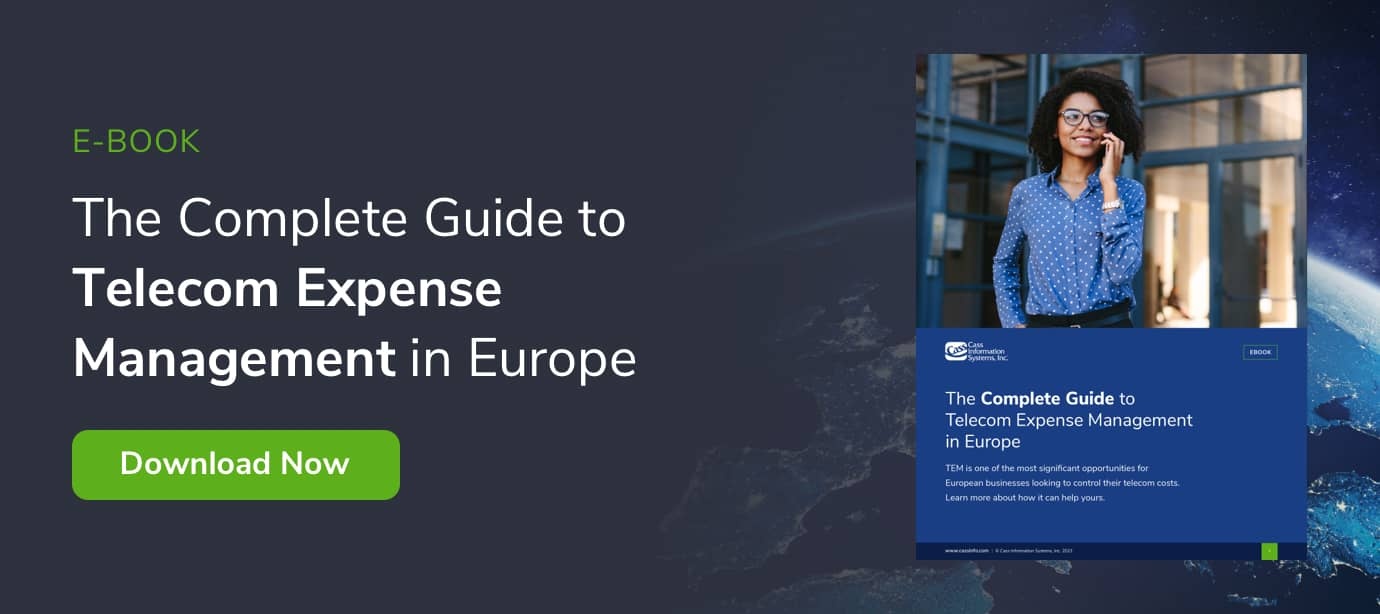The world is rapidly changing, and the European telecom market continues to grow. Experts agree that telecom services have weathered the 'storm' of COVID-19 better than other IT segments. And by 2023, annual IT and telecom spend in Europe is expected to exceed $994 billion.
Multiple factors have influenced this. From the increase of businesses relying on connectivity to enable home-based working, to innovations such as 5G, the telecom landscape has been both challenged and strengthened in the last year. And European businesses can't afford to ignore these changes.
Many organizations are now using telecom expense management (TEM) to prepare their telecom environment for the future. TEM maximizes cost-savings, implements greater control, and improves end-user experiences across your ever-growing telecom estate.
What is Telecom Expense Management?
Telecom expense management is a service that improves processes across IT, procurement, and financial departments. This includes the lifecycle of ordering, provisioning, support, and cost management of telecom assets in a large-scale enterprise.
By implementing TEM, your business will achieve better visibility across all telecoms services including fixed and mobile telephony, IOT, and even public cloud licence tracking.. The delivery of the service includes BI reporting which can support greater C-Level decision making.
Telecom Expense Management in Europe
In Europe, TEM is one of the most significant opportunities for businesses looking to control their telecom costs.
Managing your telecom environment is time-consuming for internal teams. It not only requires time, but also expertise and industry knowledge to negotiate the best telecom contract terms. To achieve this, European-based businesses need a combination of in-region resources and expert personnel, but many in-house teams lack essential visibility, time, and vendor relationship knowledge at a global level.
For example, you may need to negotiate the best contract terms for a certain country, but your in-house teams are hindered by language, cultural, or currency barriers to truly understand and negotiate the best terms for your telecom environment.
When internal teams don't have this knowledge, telecom contracts are left unmanaged to rollover each year, or discrepancies in billing aren't identified or disputed effectively. So, your telecom estate can continue to grow unabated without cost controls in place.
What are the most common challenges of TEM?
- Misallocated resources
- Vendor relationships
- Regional knowledge
- Lack of standardized processes
To tackle this, TEM enables European businesses to improve efficiency across key telecom processes. From auditing, reporting, and procurement to invoice management, inventory management, managed mobility, and support services – TEM provides a centralized system to unlock greater control and visibility.
Automated workloads continuously provide rolling reporting and visibility of your telecom expenses. Year-on-year, your organization can minimize non-essential spend, resources, and time without putting extra burden on internal teams.
Meanwhile, an expert TEM partner handles vital elements of your TEM lifecycle for you. From contract negotiation to mobility lifecycle management, a TEM partner has in-region resources specific to your country requirements. The skilled team can negotiate the best deals for you, dispute contract inconsistencies, and more.
All of this is implemented across your entire telecom estate, managed from one centralized platform.
What's in the Guide?
- What is TEM?
- The Challenges of TEM in Europe
- How Does TEM Help European-based Businesses?
- The Benefits of TEM & TEM Best Practice
- What to Look for in a TEM Provider
To learn more about how telecom expense management can help your business, click here to download our free guide today.


